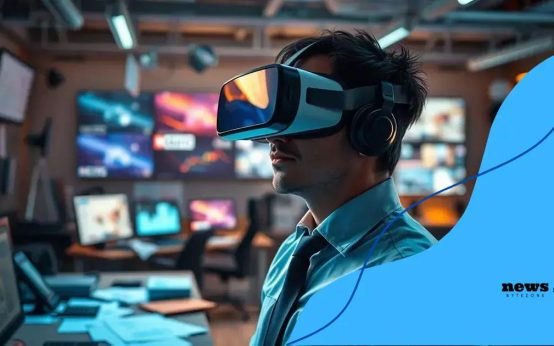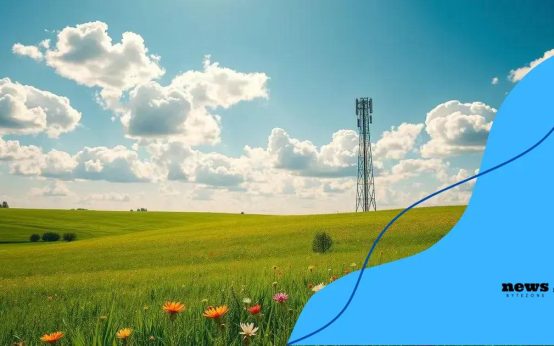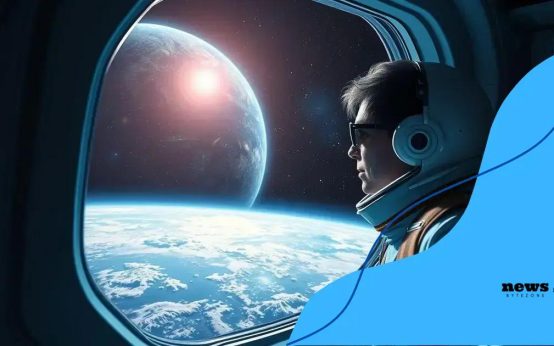The rise of AI-generated art is transforming creativity by utilizing algorithms and machine learning, allowing unique artistic expressions while challenging traditional notions of authorship and copyright.
The rise of AI-generated art is transforming how we understand creativity and ownership in a digital age. Ever wondered how algorithms can create stunning artworks? Let’s dive into this intriguing topic.
Understanding AI-generated art
AI-generated art is becoming a prominent topic in today’s creative landscape. Artists and technologists are exploring new ways to blend creativity with technology. With the rise of artificial intelligence, traditional notions of art are being challenged.
What is AI-generated art?
At its core, AI-generated art refers to artwork created by algorithms and machine learning technologies. Unlike traditional artists, AI uses vast amounts of data to learn and generate unique pieces. It can analyze colors, styles, and even emotions behind existing artworks.
How does it work?
AI art typically involves training a neural network on images and styles. By recognizing patterns, these systems can create new art pieces. Artists might use programs like DeepArt or Artbreeder to transform their ideas into visual art. This process raises questions about originality and authenticity.
Benefits of AI-generated art
- Accessibility: Artists can use AI tools to explore their creativity without needing extensive technical skills.
- Innovation: AI-generated art pushes the boundaries of creativity, allowing for new styles and techniques.
- Collaboration: Artists can collaborate with AI, creating a fusion of human and machine creativity.
One fascinating aspect of AI-generated art is its ability to evoke emotion. Some pieces resonate deeply with viewers, despite being the product of a machine. This raises questions: Can a machine truly understand or convey emotion? How does this impact our appreciation of art?
Furthermore, AI-generated art is increasingly being recognized in the art market. Auction houses are now selling pieces created by algorithms, reflecting a shift in perception. However, this trend also brings challenges regarding copyright and ownership. Who owns the art created by a machine?
As we delve deeper into the realm of AI-generated art, it’s essential to consider the implications for artists, audiences, and the art world as a whole. The technology continues to evolve, and its impact on creativity is profound.
The intersection of creativity and technology
The intersection of creativity and technology is a fascinating space where ideas and innovations collide. This dynamic relationship is reshaping how we think about art and expression. As technology evolves, creative possibilities expand, allowing artists to explore new mediums and methods.
Embracing new tools
Artists now have access to a variety of digital tools that enhance their creative processes. Software like Adobe Creative Suite and Procreate enables endless exploration of ideas and styles. These tools also allow for quick adjustments, which can lead to greater experimentation in art.
AI as a creative partner
Artificial Intelligence is increasingly being seen as a partner in the creative process. With programs that can generate visual art, writers can find inspiration in new forms. This collaboration raises intriguing questions about authorship and originality in the creative landscape. How much of the work is attributable to the artist versus the AI?
Impact on traditional art forms
- Expansion of artistic styles: Digital platforms make it easier to experiment with different styles.
- Accessibility: More people can create art without needing extensive training.
- Integration: Artists blend traditional techniques with modern technology.
Moreover, multimedia art forms are emerging, combining video, sound, and interactive elements. This shift enriches the viewing experience and engages audiences in unique ways. For example, virtual reality (VR) art allows viewers to immerse themselves in a digital environment, transforming passive viewing into active participation.
The convergence of creativity and technology has also resulted in new business models for artists. Many creatives are using social media platforms to showcase their work and promote their brand. These platforms provide unprecedented access to global audiences, enabling artists to reach new fans and potential clients.
As we navigate this exciting intersection, the possibilities are endless. The continuous innovation in technology challenges the traditional confines of what art can be, making the future of creativity even more intriguing.
Copyright challenges in the age of AI

Copyright challenges in the age of AI are becoming increasingly complex. As artificial intelligence creates art, questions arise about who truly owns the work. Are the creators of the AI programs or the users who input data into these systems the rightful owners?
Understanding copyright basics
Copyright protects original works of authorship, giving creators exclusive rights to their creations. However, when AI generates art, identifying the original creator can be difficult. Traditional copyright laws may not apply in instances where a machine creates the artwork.
Case studies and precedents
Several notable cases highlight these challenges. For instance, in 2018, an AI program named DeadEnd generated an artwork that was registered for copyright. This led to debates about whether an AI could be considered an author. These discussions reveal the need for updated laws that reflect the advancements in technology.
The impact on artists
- Reduced income: If AI-generated art can be copyrighted, it may lead to a decrease in opportunities for human artists.
- New opportunities: Artists can learn to collaborate with AI to enhance their work and reach broader audiences.
- Legal uncertainty: Many artists feel unprotected because copyright laws are still evolving.
As the legal landscape changes, artists must stay informed about their rights. They can seek guidance from professionals specialized in intellectual property to navigate potential challenges. Furthermore, organizations and advocates are working to develop new copyright frameworks that recognize the role of AI.
Public opinion also plays a role in shaping the future of copyright. As more people engage with AI-generated art, they will voice their thoughts on ownership and ethics. Art has always evolved with technology, and the current era is no different. It presents not only challenges but also exciting opportunities for innovation in creative expression.
Case studies of AI art
Case studies of AI art showcase the innovative ways technology is reshaping creativity. These examples highlight both the challenges and opportunities presented by artificial intelligence in the art world. By examining notable instances, we can gain insight into how AI is influencing artistic expression.
1. The Portrait of Edmond de Belamy
One of the most famous examples is the Portrait of Edmond de Belamy, generated by the Paris-based art collective Obvious. This artwork was created using a machine learning algorithm called Generative Adversarial Networks (GANs). It became a landmark case when it was auctioned at Christie’s for an astonishing $432,500. This sale marked a pivotal moment in how society views AI as a creator.
2. AI and music composition
AI is not limited to visual art; it is also making waves in music. The project AIVA (Artificial Intelligence Virtual Artist) composes original pieces that mimic famous composers’ styles. AIVA’s compositions have been used in films and video games, demonstrating the crossover potential between technology and traditional art forms.
3. DeepDream and surreal art
Google’s DeepDream project illustrates how neural networks can interpret images. Originally designed to help AI recognize patterns, it produces dream-like visuals by enhancing certain features. Artists have embraced this tool, using it to create unique, surreal artworks that challenge our perceptions of reality.
4. Artbreeder and collaborative creation
- Artbreeder allows users to combine images, creating new artworks collaboratively.
- It features a user-friendly interface that lets anyone experiment with artistic styles.
- This platform fosters a community of artists and creators who share and remix each other’s work.
These case studies reflect the transformative power of AI in the art world. They challenge traditional concepts of authorship and creativity while pushing the boundaries of what is possible in art. As more artists explore these technologies, we can expect to see even greater innovations in the coming years.
The future of creativity in a digital world
The future of creativity in a digital world is an exciting and evolving landscape. Technology continues to reshape how we create, share, and experience art. As digital tools become more advanced, they empower creators to push the boundaries of their imagination.
Emerging technologies
Innovations such as virtual reality (VR), augmented reality (AR), and artificial intelligence (AI) are transforming artistic expression. Artists can use VR to immerse audiences in entirely new worlds, while AR allows for interactive experiences that merge the physical and digital realms. These technologies create unique opportunities for storytelling and engagement.
Collaboration and community
The digital age promotes collaboration among artists worldwide. Online platforms enable artists to connect, share ideas, and co-create projects. This global community fosters diversity in artistic styles and techniques, allowing for richer and more varied forms of expression.
Accessibility and democratization
- Digital tools make art creation accessible to a wider audience, allowing anyone to express their creativity.
- Social media platforms showcase diverse talents and enable artists to reach global audiences.
- New business models, such as crowdfunding, support creative projects that may not have traditional funding.
Moreover, the fusion of technology and creativity encourages experimentation. Artists can easily try out new techniques and styles without the constraints often found in traditional art practices. This freedom leads to innovative forms and expressions that were once thought impossible.
The future will also raise questions about authenticity and ownership. As AI and machine learning become integral to the creative process, discussions about the role of human artists will intensify. Will creators be seen as collaborators with machines, or will machines take center stage in artistic endeavors?
As we look ahead, it’s clear that creativity will continue to evolve alongside technological advancements. The merging of artistic vision with digital innovation paves the way for a new era of creativity, rich with potential and opportunities for all.
FAQ – Frequently Asked Questions about AI-Generated Art
What is AI-generated art?
AI-generated art is artwork created with the help of artificial intelligence, using algorithms and machine learning to produce unique pieces.
How does AI influence creativity?
AI expands creativity by providing new tools and methods for artists to explore, allowing them to experiment with styles and techniques that may not have been possible before.
What are the copyright implications of AI art?
The copyright of AI-generated art is complex, as questions arise about who owns the work: the creator of the AI, the user, or the AI itself.
Can anyone create art using AI tools?
Yes, many AI art tools are user-friendly and accessible, allowing anyone to experiment with artistic creation, regardless of their skill level.

 Virtual reality in journalism: immersive storytelling techniques
Virtual reality in journalism: immersive storytelling techniques  The impact of 5G on rural connectivity and development
The impact of 5G on rural connectivity and development  Space tourism: preparing for an amazing journey
Space tourism: preparing for an amazing journey